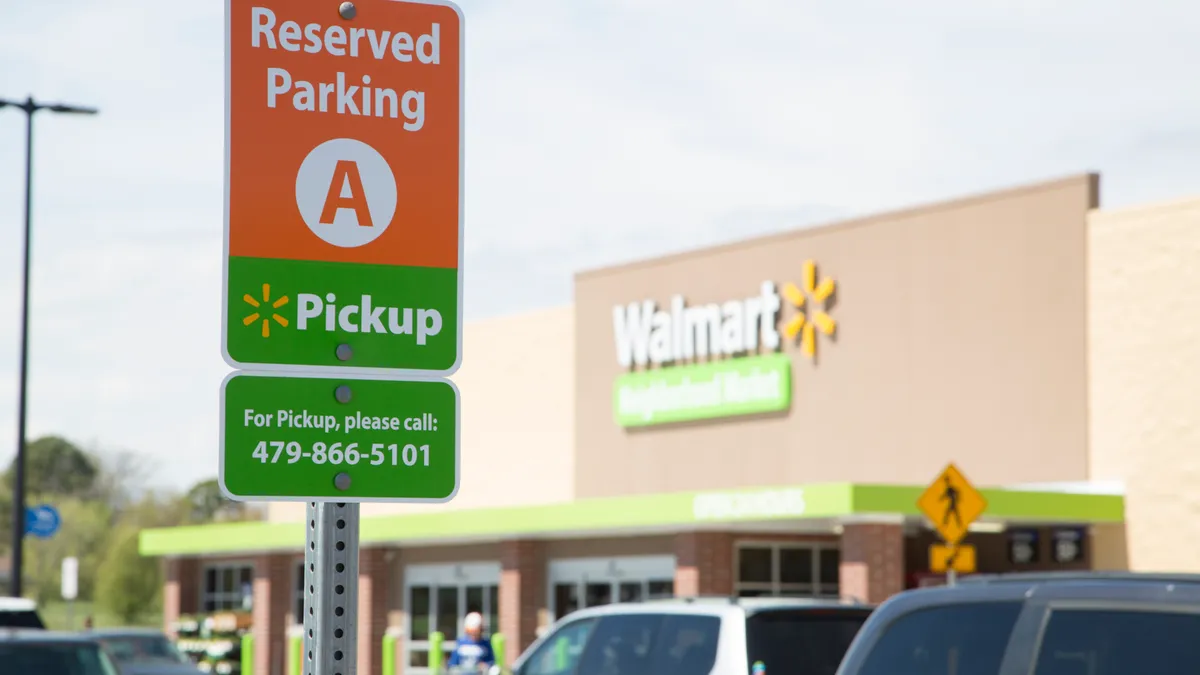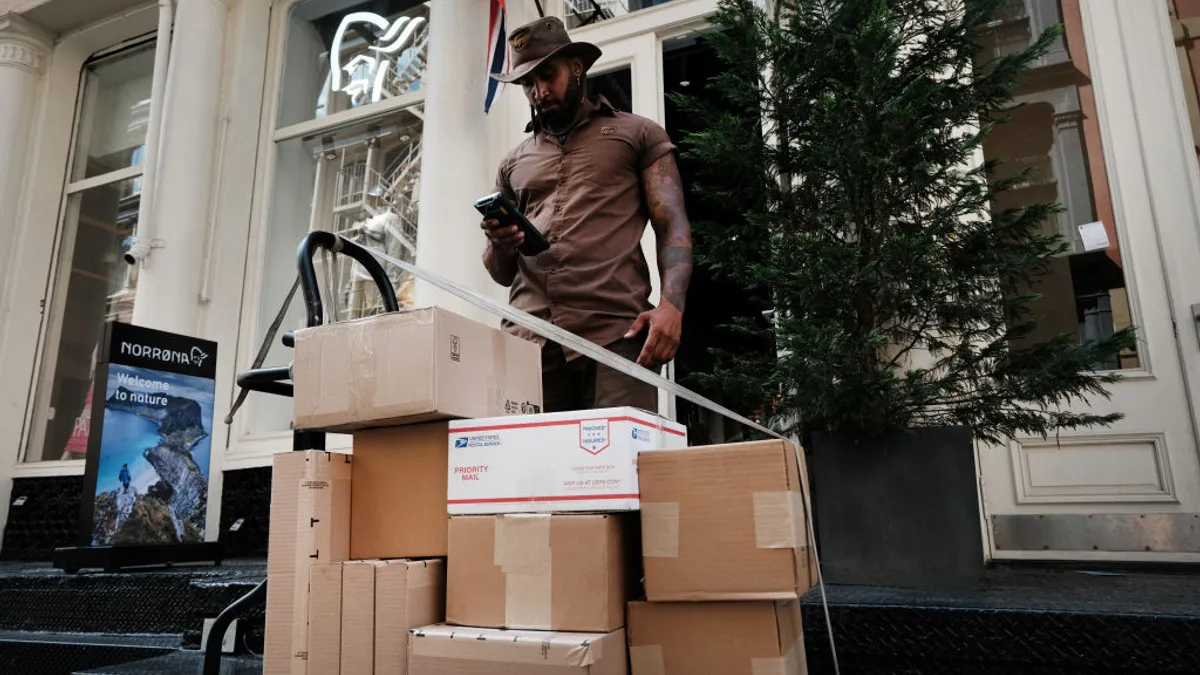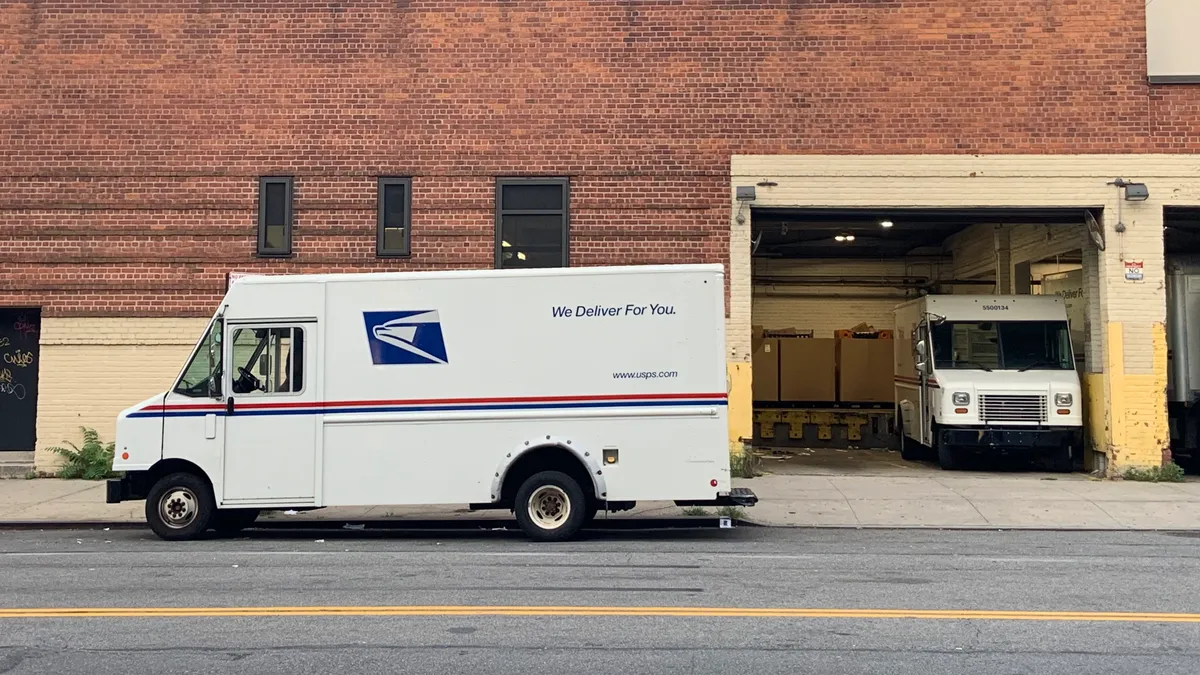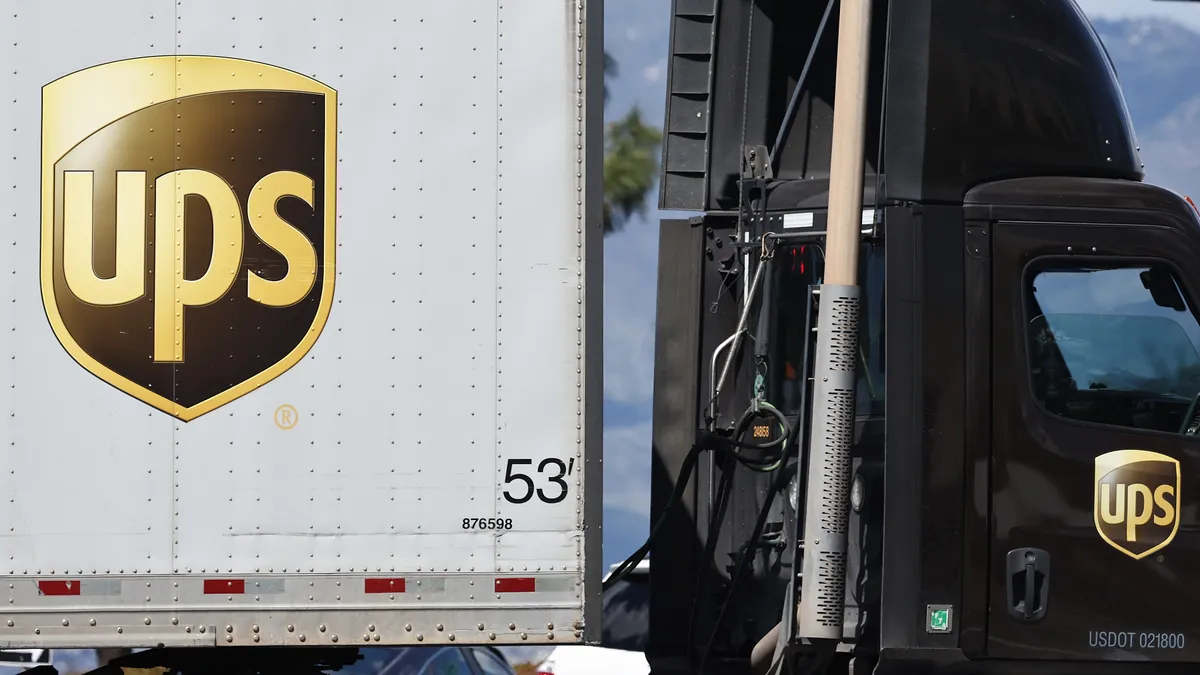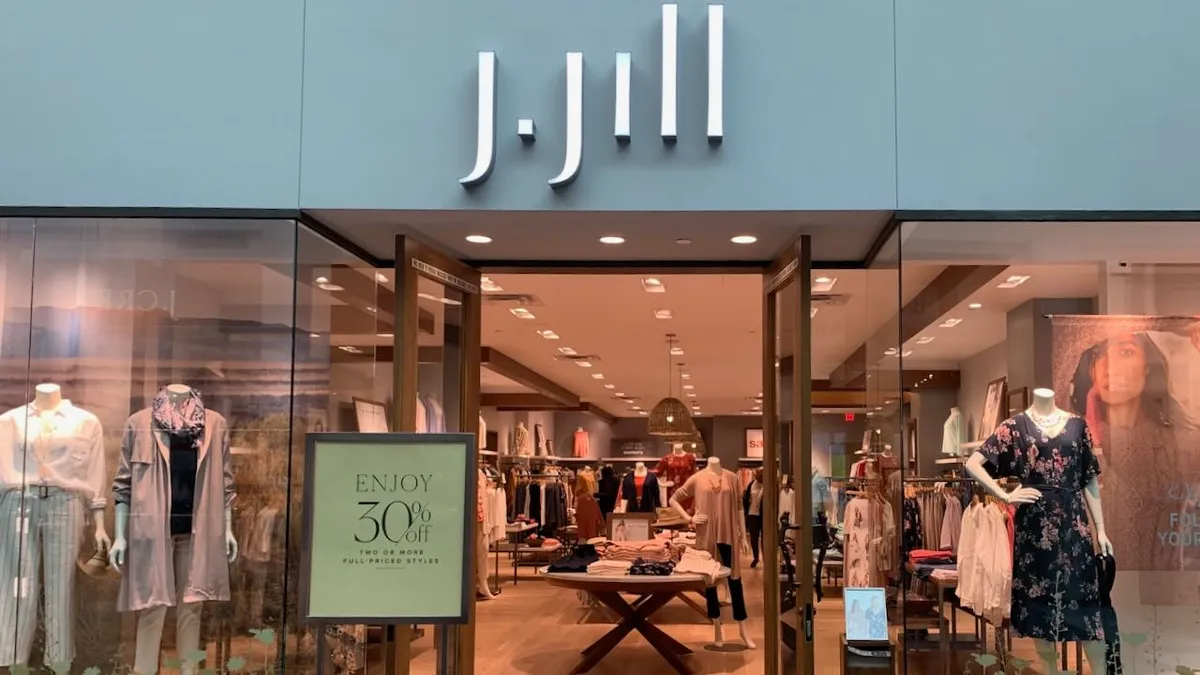As retailers expand into e-commerce, click-and-collect has become the preferred starting point because it utilizes existing stores and workers, and because it isn't as expensive or logistically complicated as shuttling groceries to consumers' homes.
Driven by a rapid rollout from companies like Kroger and Walmart, grocery pickup is on track to become a $35 billion business by next year, according to financial firm Cowen. As soon as next year, one-quarter of consumers will have used the service in an effort to save time, avoid lengthy checkout lines and have more flexibility with grocery shopping.
As consumer adoption grows along with competition, however, click-and-collect promises to become increasingly complex for retailers, who must work to solve the service's main consumer headaches.
"For click-and-collect, the biggest pain points right now are identifying when a car is in the store's vicinity and ready to retrieve [a customer's] order," Sucharita Kodali, analyst at Forrester, told Grocery Dive. "The other is packing the order. It may take sometimes an hour or more to pack an order, sometimes even longer if you don’t have enough pickers in-store."
An eye toward innovation
In nearly every market nationwide, shoppers can order their groceries online, then swing by a local store to pick them up. Kroger and Albertsons offer the service at hundreds of locations while Instacart, which partners with both retailers and began offering pickup nationwide as a complement to its core delivery service last year, has seen greater-than-anticipated demand from retailers.
Walmart has been leading the click-and-collect charge in grocery and will expand the free service to more than 3,000 stores by the end of this year. Between 11% and 13% of its customer use the service and it will comprise roughly one-third of the retailer's sales by next year, Cowen predicts.
As it rolls along, Walmart is engineering updates to make its pickup service more compelling for shoppers. At the recent Groceryshop conference in Las Vegas, Tom Ward, Walmart's senior vice president of digital operations, said the company is using data to identify "less-busy" pickup times for customers, and to make "smart" product substitutions whenever products are out of stock.
Walmart has also refined its tracking technology to reduce wait times and to allow workers to pinpoint the parking slot where each customer has pulled in.
"We want to be able to take out any level of friction from that experience," Ward said during a presentation.
Realizing that a 10-minute wait these days could cause a shopper to defect to another store, retailers and tech startups are linking up to solve the problem.
Radius Networks offers technology that uses a consumer's mobile phone location services to alert the store when he or she is in the vicinity and entering the parking lot. SpartanNash has launched the feature as part of its pickup service and has reported a reduction in average wait times from eight minutes to nearly zero.
For many retailers, the pressure to add a click-and-collect service is driven by bigger retailers like Walmart, said Jeff Baskin, executive vice president at Radius Networks.
"What I typically hear from grocery retailers is that wait times today with a manual packing process are between eight to 12 minutes, and they are usually guessing," Baskin told Grocery Dive. "They just know they get complaints about long wait times and bad experiences."
Of course, being able to track consumers is separate from being able to quickly and efficiently fill orders. Scott DeGraeve, a former executive with Peapod, now chief operating officer with e-commerce firm Locai Solutions, said retailers are installing more sophisticated order management systems to conduct the flow of orders. And while grocers may have been able to rely on multitasking front-end workers when they first moved online, they're now assigning employees solely to the task of picking and packing orders.
As online grocery share grows, DeGraeve noted, retailers will need to look beyond the store to stock inventory and fill orders. For example, Walmart has retooled one of its New Hampshire stores to accommodate a mini-robotic fulfillment center for faster order processing. Several other retailers have signed on to pilot automated fulfillment options, from mini centers manufactured by firms like Takeoff Technologies to the sprawling Ocado warehouses on deck for Kroger.
DeGraeve believes automation could eventually become part of the fabric of store operations. Locai has developed a store-of-the-future prototype where, in a multilevel structure at the center of the selling floor, robots pick and fill orders. The bots focus on shelf-stable and frozen products while store workers or customers select perishable goods around the perimeter. Shoppers can order from an in-store kiosk or order online and pick up from a dedicated parking bay.
For many regional grocers and independents, however, automation remains an unproven technology that may cost more than its return on value.
"Although a number of retailers are investing in technologies geared toward automation, they have their upper limits in the grocery industry," Brian Moyer, CEO at grocery e-commerce platform Freshop, told Grocery Dive. "You see big companies with a lot of money like Blue Apron fail trying to ship perishable products even when they are charging a lot of money."
New pickup options and technologies
Engineering better pickup fulfillment isn't an automation-or-bust proposition, said DeGraeve. Grocers are updating their staging areas to better manage order flow across pickup and delivery. Some are building temperature-controlled storage sheds that can hold orders outside of the staging areas, allowing workers to pick and pack when it's most convenient for them.
At Stop & Shop stores, pickup workers put completed orders inside temperature-controlled bins, which are then placed inside a separate hub sitting just outside the store. Once a customer pulls up, a worker gathers their bins and shuttles them out to the waiting car. Stop & Shop began offering same-day pickup service in as little as four hours at 20 stores this summer.
Some retailers are trying to raise the bar on convenience through offering pickup away from the store. Hy-Vee has installed pickup lockers at hospitals in Iowa and South Dakota. Customers place their orders online, then enter a passcode at their designated locker to pick up the order.
Romanian startup Cleveron, which built Walmart's automated order pickup towers, launched a robotic pickup kiosk that can retrieve customers' orders within 20 seconds. Filling the length and width of an average parking space, the kiosk holds dozens of orders and can be accessed using a mobile QR code or unique pin number.
Retailers like Giant and Walmart have built standalone depots that can service pickup orders and, in some cases, send out deliveries as well. Amazon also opened two Fresh Pickup locations in Seattle in 2017, but has yet to build additional locations.
Degraeve said the success of pickup options away from stores depends on location and speed of service. Pickup lockers, he said, are mainly used for fill-in trips, so retailers need to place them in areas that are dense enough to see a high volume of traffic, and close enough to fulfillment centers for workers to regularly — and efficiently — load orders.
While working for Peapod, DeGraeve and his team tried placing pickup lockers at transit stations — a test that never really took off. Still, he sees a future for pickup options at transit hubs and college campuses where time-pressed consumers would appreciate the added convenience. It's finding those places where people are and having the capability to fill in product gaps for them, DeGraeve said.
DeGraeve sees pickup as part of a modern selling strategy centered on choice and convenience. Kodali with Forrester, meanwhile, believes grocers may be expanding click-and-collect too rapidly. Not every grocer has a desirable pickup location or unique product offerings that merit the expense and fine-tuning of a curbside pickup service. Layering technology over an uncompelling value proposition can compound the problem, she said.
Kodali would rather retailers improve the in-store experience for consumers. Simple tasks like helping them find an item or ordering an item for them when it's out-of-stock in-store would go much further towards capturing consumer loyalty, she explained.
"The reason online grocery is still so small is because the solution isn't serving the needs of everyone, people don't find value in it, or they are not willing to pay what it costs to have someone else do their shopping for them," Kodali said. "You have to be many things to many people. That is the challenge of retail."
Jeff Wells contributed reporting to this story.


